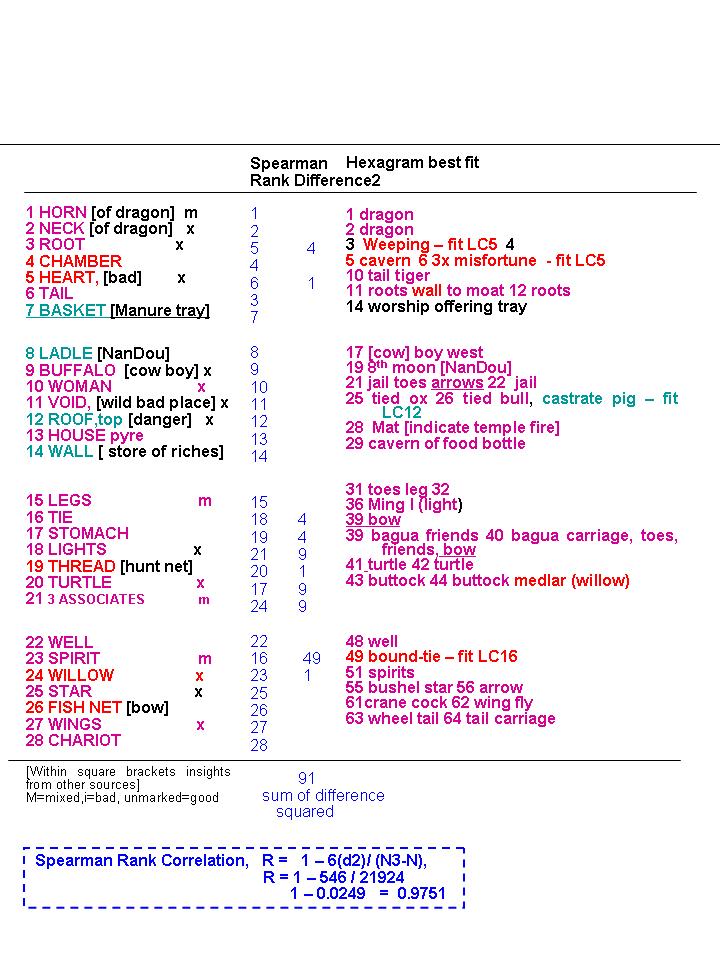

|
GUI WORLD OF CULTURE |
WORLD OF FENG SHUI |
on Feng Shui |
on Feng Shui |
| 
|
|
Introduction The 28 Lunar Constellations existed as early as about 3000 BC and form important parts of the esoteric lore, especially astrology, of practically all the ancient cultures. But hardly anyone knows how and why they originated. An allied mystery is how the lunar constellations got their names. The earliest 28 Lunar Constellations have unequal spans. In a breakthrough finding of the millennia, reported in a previous article, our research discovers that the unequal 28 Lunar Constellations statistically andsignificantly correlate (r=0.8846) with the unequal segments of the Sun's heterogeneous surface! That is, the 28 Lunar Constellations tracked the different solar energies coming from the heterogeneous surface of the Sun. As Earth orbits around the Sun, it will receive different solar radiations which will have different effects on biological development. This article reports another breakthrough finding about how the lunar constellations got their names.
Any source giving rise to the names of the 28 Lunar Constellations would have to be very old. Such very ancient Chinese texts would include documents like the 1126 BC King Wen I Jing, the 3000 BC Shan Hai Jing, and parts of Shu Jing (Book of History) and Shih Jing (Book of Poems). Is it possible to prove links between any of them and the 28 Lunar Constellations? Incidentally the ancient Hindu Vedas (1900 BC) do talk of the 28 Lunar Constellations. However, in this article, we will search for possible origins of the names of the 8 Lunar Constellations in the King Wen I Jing.
Table 1 illustrates the names and properties of the 28 Lunar Constellations. Table 2 illustrates the symbols found among the hexagrams of the King Wen I Jing.
Table 1. Propperties of 28 Lunar Constellations
Each of the 64 hexagrams in King Wen I Jing describes various events and activities. There are references to objects or symbols like stars, animals, equipment, which have similarities to the names of the 28 Lunar Constellations. The symbols in the hexagrams have similarities to names of the lunar constellations and are also have similar sequential positions as the lunar constellations. Some of those which seem to relate the names of the constellations but are too far away along the sequence.
 top |
|
|
Spearman Rank Correlation It is possible to determine by the Spearman Rank Correlation how the hexagrams' symbols correlate to the names of the constellation, as illustrated in Table 2. The Lunar Constellations are ranked from 1 to 28. Symbols of the hexagrams which are similar to those of the lunar constellations are also ranked. Most the hexagrams symbols are almost at the same sequence as the lunar constellations. Some of the hexagrams symbols may be further away. The differences of the ranks of the symbols and the names of the lunar constellation are surprisingly very small, only 91. The Spearman Rank Correlation coefficient is 0.9751, which is very highly significant, meaning the hexagrams symbols are practically the same as the names of the 28 Lunar Constellations! We have broken an millennial old enigma about how the names of the lunar Constellations arose! It is thus statistically proven that the names of the 28 Lunar Constellations originated from key symbols in the hexagrams!
The hexagrams of King Wen I Jing contains descriptions of various seasonal environmental conditions, which flow in a sequence through the year. These I Jing seasonal conditions are also sequentially coded in the 28 Lunar Constellations.
Confucius explained that the hexagrams reflect conditions regulated by the cyclic Yin Yang natural forces of Heaven and Earth:
QED. We have statistically solved the millennial old puzzle about the origins of the names of the 28 Lunar Constellations!

Unique articles from
the Wang Ziqiao Lineage:
Milennia old enigma about 28 Lunar Constellations Solved!
Look up related breakthrough articles on astronomical basis of Lou Shu "flight of the 9 numbers".:
|
|